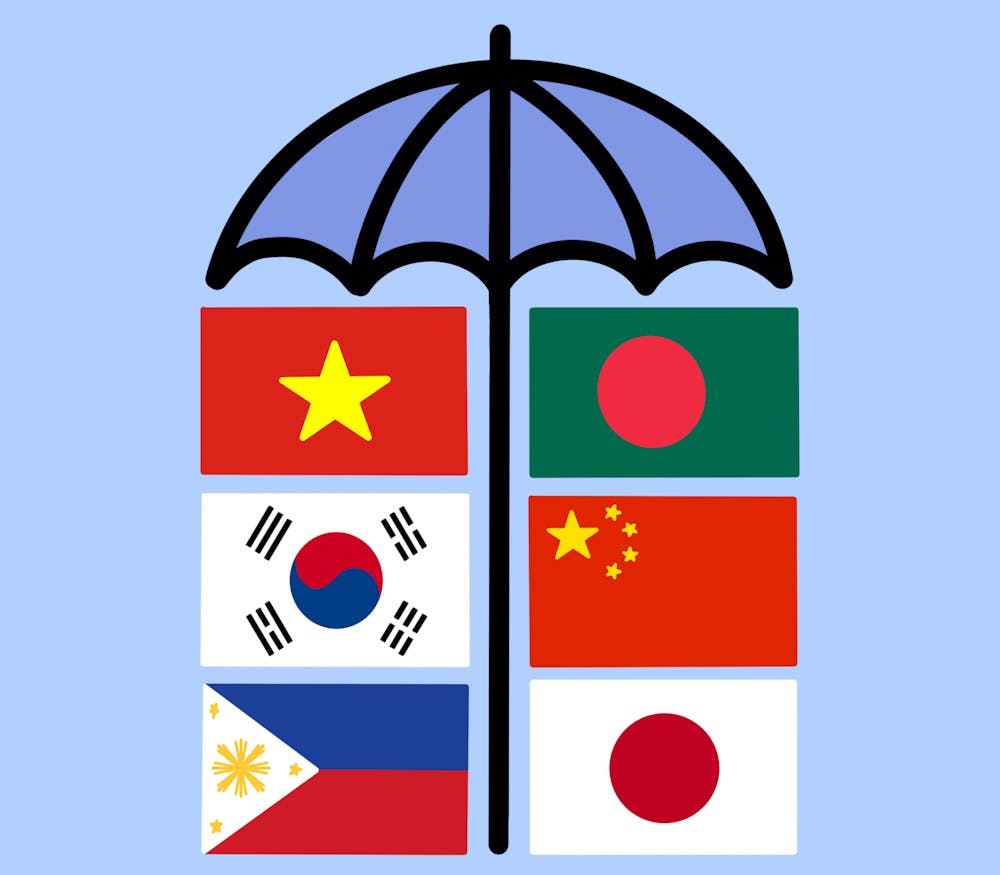Voting blocs hold power. Political alliances like the New Deal and Reagan coalitions have historically depended on coordination between voting blocs to succeed. Consequently, it’s no surprise that political activists and academics are eager to place individuals into easily categorizable boxes. Though doing so is well-intentioned, this gets particularly tricky when done under the construct of race. Notably, the creation of an Asian-American panethnicity comes with significant dangers — dangers that must be heeded as the population grows more sizable over time.
Sociologists have brought the term “panethnicity” into greater visibility since the mid-twentieth century. Loosely speaking, panethnicity refers to a process where artificially imposed boundaries bring ethnic groups together based on cultural origins and heritage-based traits. It is often used when referring to the Asian-American identity. Because of these individuals’ shared history of alienation, exclusivity and oppression, Asian Americans can often relate to one another through their relationship with U.S. institutions. Asian American panethnicity thus derives strength in numbers by amassing under a single, broad coalition, which carries with it unifying and predictive power.
From a political standpoint, panethnicity arguments are compelling. They enable racial groups to appear more legitimate by combining separate ethnicities under a single name. It is much easier to advocate for “Asian-American” equality, for instance, than for “Korean-American” equality. Some even compare Asian American panethnicity to the Black-American identity. The fact that Black Americans are more recognized by the “Black” label, rather than specific African ethnicities, suggests a sense of inevitability to panethnicity. This implies all ethnicities within the U.S. will blur with time, and perhaps one day fade away entirely.
But for me, the development of Asian-American panethnicity is drastically different from the formation of Black-American identity. Asian-American panethnicity does not stem from a history of institutionalized enslavement. Whereas many Black Americans are descended from enslaved individuals and thus unable to track their lineage to specific ethnic groups, many Asian Americans are privileged with knowledge of their cultural background from more recent waves of immigration. Black America's cultural identity could be said to stem from the horrors of enslavement, which catalyzed community. The same cannot be said for Asian Americans. It is undeniable that the two stem from very different roots — one of political choice and the other of forced necessity, the latter imposed by white supremacy.
The term “Asian American” is incredibly broad. In fact, it’s hard to overstate just how vast the label has become. When one is described as “Asian American,” the traditional image is a person of East Asian descent — usually Chinese, Japanese or Korean. But the term “Asian American” also covers those of Southeast, South and West Asian descent. This includes those whose heritage stems from places like the Philippines, Bangladesh or Iran. Despite these regions being geographically part of Asia, it becomes easy to exclude or reject them from the coalition, resulting in a form of internal erasure. Panethnicity glosses over groups that are typically forgotten when discussing the “Asian American” label, and ignores the stark differences between cultures in various Asian regions, implying that all Asian Americans are bound by similar traditions. West Asians are different from South Asians. Asian Americans in urban centers have different lived experiences than those in rural towns. And presenting the Asian American life as universal makes it difficult for some Asian Americans — particularly West Asians — to self-identify as Asian, instead falling into indistinct “other” categories.
Panethnicity risks a reductionist mode of thinking towards marginalized communities. We assume that Asian Americans will vote the same, much in the same way we assume suburban women or rural farmers will vote the same way. But voting blocs are not monoliths. This is true of all groupings but is especially egregious when the groups are determined by race. One only has to look at the divisive support for former president Donald Trump found within Filipino and Vietnamese American communities to see that race does not predispose you to a specific party affiliation. Assumptions that the “Asian vote” or the “Latino vote” will reliably swing one way or another are simply false. And given that Asian communities have struggled against the stereotype that all Asians look, act or otherwise are the same, we must take caution to ensure that we are not perpetuating the very assumptions we want to break down.
It’s far too easy to wash over panethnicity in broad strokes, marking it as an unequivocal good that will allow for greater representation. When a Vietnamese American representative takes office, it becomes an “Asian” victory, not just a “Vietnamese American” victory. When movies are made starring a predominantly Chinese and Chinese American cast, Asian Americans of various ethnic backgrounds celebrate, not just those of Chinese descent. But this lends itself to the question — who exactly is an “Asian American” under panethnicity? And what exactly are we losing when we subscribe to a panethnic school of thought? If these questions are not addressed, we might lose something much more valuable than what we gain.
Samantha Cynn is an Opinion Columnist for The Cavalier Daily. She can be reached at opinion@cavalierdaily.com.
The opinions expressed in this column are not necessarily those of The Cavalier Daily. Columns represent the views of the authors alone.







